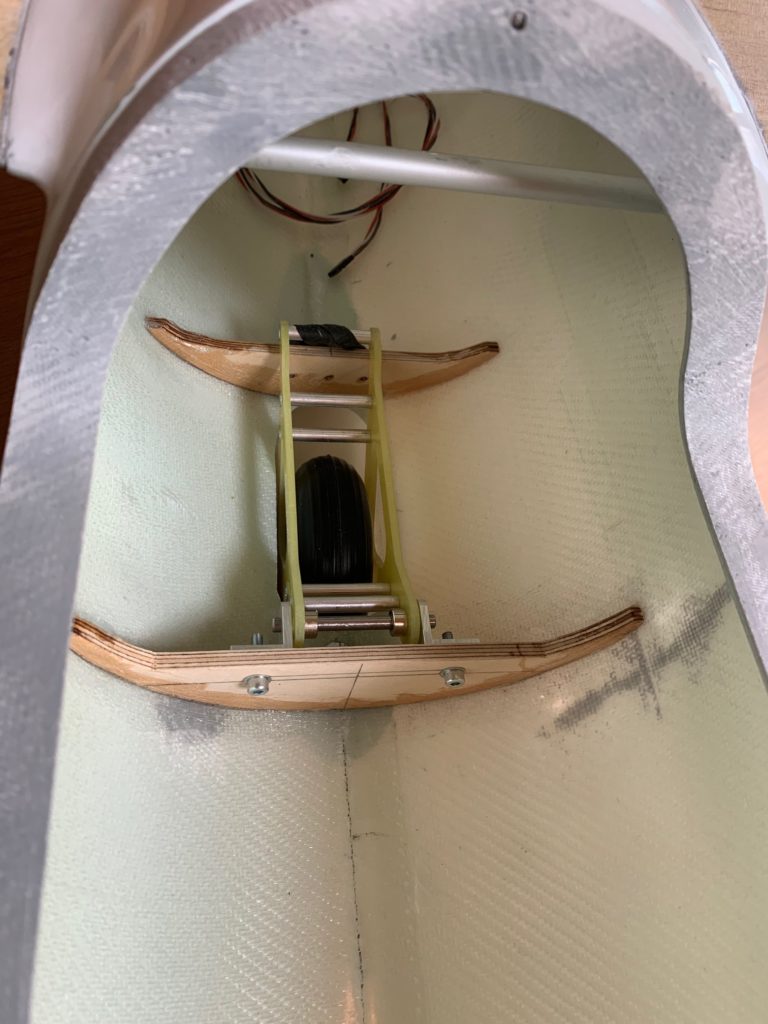Fitting the landing gear required fiddling a bit with the correct position of the two spants to ensure that the center of the wheel is 2cm behind leading edge of the wing. Then cutting the hole at the bottom of the fuselage to the right size so that the wheel fits through. The suspension is a couple of rings of inner bike tube, which we also use for our retract able gears. I always first provisionally fix the spants with a few dots of 5minute epoxy, and once everything is in the right place I fix it using 12hr epoxy.
Fitting the wheel casing is done with two 4mm screws. I first cut some plywood to size, fixed it in the right position on the fuselage with a few dots of 5min epoxy resin, then drilled the holes, removed the plywood from the fuselage and fixed it to the wheel casing. Using a syringe and some coloured 12hr epoxy resin I filled the small gap between the wheel casing and the fuselage to ensure a perfect fit.




First of all, congratulations for this wonderful project.
I know EMB 400 Urupema since its born in Brazil. It´s a wonderful glider. Were built 12, PT-ZTU were prototype. Then PT-PEA, PT-PDQ, PT-PDR, PT-PDS, PT-PDT, PT-PDU, PT-PDV (after PT-ZKV, modifyed by Joseph Kovacs, project Engineer of the EMB T-27 Tucano), and others that I don´t remeber prefix.
If you exuse me an observation, your elevator system is not similar to the original. That one was an entire moving piece, and the small part used as a trim tab.
But in general, your model is very similar to the real one.
Regards from Brazil
Ruy Moraes
Dear Ruy, thanks so much for your kind message! It’s a wonderful glider indeed – and one of the most “special” ones in my “Hangar” – an incredible slope racer that also thermals very well. We like to build special planes and were very proud to build a Brazilian glider for once – something different than the many often built European gliders! As for the elevator: yes, that was a deliberate choice. In our experience an all-moving tailplane/elevator doesn’t perform as well and is also technically more challenging to implement. We always build “semi-scale” and give functionality preference over similarity with the model. That usually means that we enlarge the elevator surface area and often also extend the fuselage length – in addition of course to changing the profile of the wing and replacing any airbrakes with 2-3 control surfaces per wing, using crow instead of airbrakes to land the glider. The result is a glider that looks as much as possible like the original but has an optimal performance – something that definitely worked with the Urupema :-). Best regards from Switzerland!